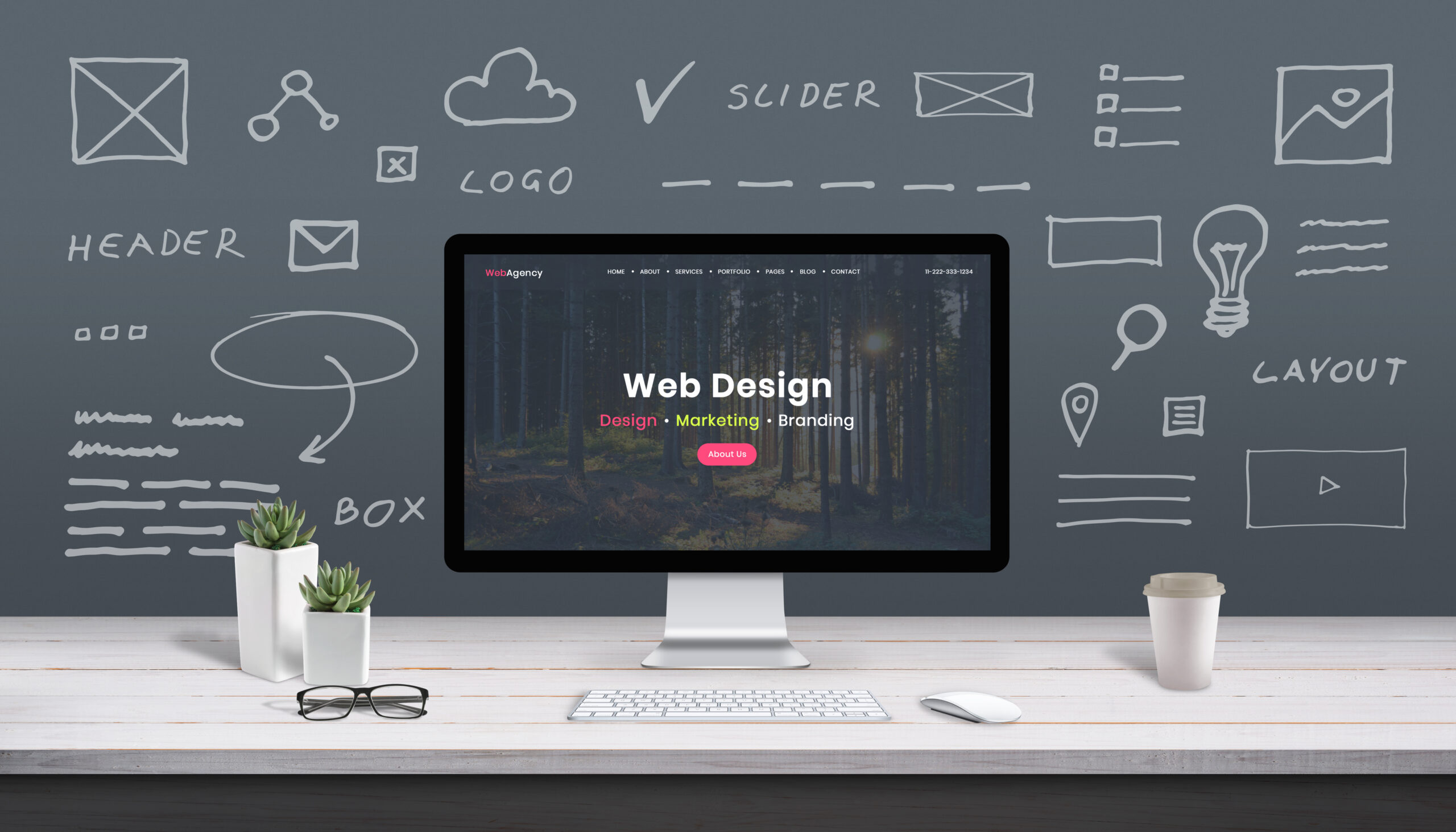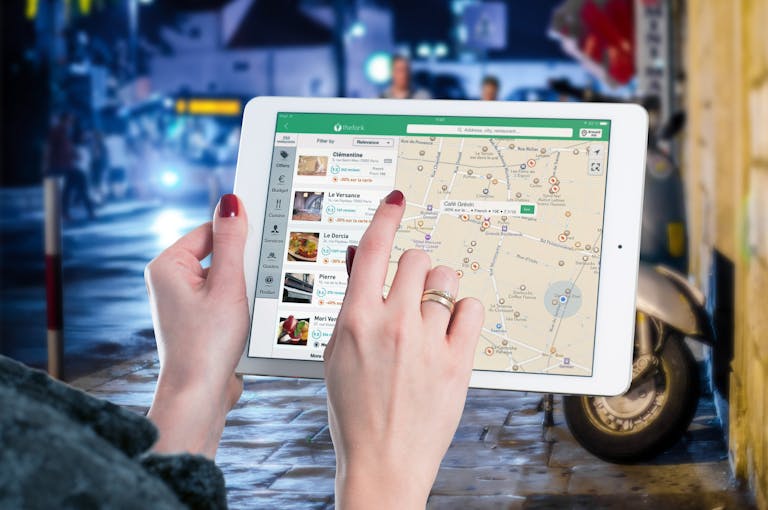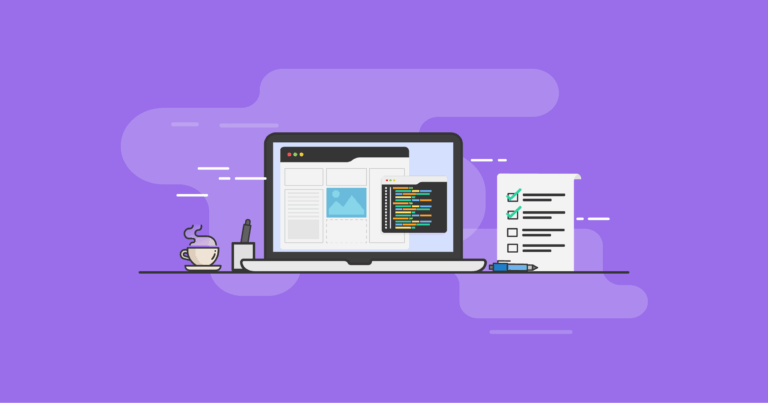The Basics of Professional Web Design

Websites
Whether you’re thinking about having your first website made, or you just need a new better one,
Host Much is here to help guide you through the basics of web design.
Your website is the core of your online activities. Marketing channels like Pay-Per-Click, Search Engine Optimization, Social Media and Email Marketing have one purpose; To bring people to your website. And the purpose of bringing people to your website is to convert them into customers. Right? A bad website will cause you to waist money on these marketing endeavors because you won’t convert as many visitors to customers with a bad website. Think of it like this:
Better Website = Better Conversions = More Customers = More $$$
There are many people in the industry that call themselves web designers, but they are basically just script kiddies and geeks that know how to point and click. They set you up with a cookie cutter template on a bogged down framework, loaded with unnecessary plugins, riddled with bugs and slow page load times. Some have basic HTML knowledge and are more than happy to rush through setting you up with a website, giving little thought to planning or developing. They are quick to load up lots of information, photos and contacts. But, this method is not the best way to turn your visitors into customers.
You need someone serious about web design, like Host Much. We will take you through the 7 phases of proper web design. Check out this short video that explains the basics:
1. Analysis
Gathering information for your website purpose, goals, and researching your target audience.
Analysis is the foundation of every successful web design project. Before a single pixel is placed or a line of code is written, a thorough understanding of the client’s needs, goals, and audience must be established. This stage transforms vague ideas into a clear, actionable roadmap, ensuring that every design decision supports measurable objectives.
The process begins by identifying the primary purpose of the website. Is it meant to generate sales, capture leads, showcase a portfolio, or provide information? Each goal requires a different approach in layout, content structure, and user interface. Defining these objectives early ensures that the site’s design and functionality align with the client’s business strategy.
Audience research is equally critical during analysis. Understanding user demographics, behaviors, and pain points allows designers to craft experiences that resonate with visitors. For example, a site targeting busy professionals may emphasize fast-loading pages and concise navigation, while a site for a creative brand might focus on visual storytelling and interactivity.
Competitive analysis is another key element. Studying competitor websites reveals industry standards, emerging trends, and opportunities to differentiate. This step often involves reviewing visual styles, feature sets, SEO strategies, and usability factors to ensure the new design positions the brand ahead of its rivals.
Finally, technical considerations are assessed. This includes determining the platform or CMS (such as WordPress), assessing hosting requirements, identifying integration needs (such as payment gateways or CRM tools), and setting performance benchmarks for speed, security, and mobile responsiveness.
By the end of the analysis stage, both client and designer should have a detailed project brief that clearly outlines goals, target audience profiles, competitive insights, technical requirements, and success metrics. This document serves as the guiding framework for the entire web design process, minimizing costly revisions and ensuring that the final product delivers real results.
2. Planning
Developing your sitemap. All the pages involved, the website structure, any proprietary apps or plugins needed and technologies used.
Planning takes the insights gathered during the analysis stage and turns them into a structured, actionable blueprint for the website. This is the stage where ideas become organized strategies, and every design, content, and technical decision is mapped out to ensure a smooth development process.
The first step in planning is defining the site architecture. This involves creating a sitemap that outlines the hierarchy of pages, from the homepage to key categories and subpages. A clear structure ensures visitors can navigate the site intuitively, finding the information they need without unnecessary clicks. At this stage, it’s also important to plan for scalability, so the site can grow alongside the business.
Wireframing comes next. Wireframes are visual outlines of page layouts, showing where content, images, and navigation elements will be placed. They help stakeholders visualize the user journey and identify potential usability issues early. While wireframes are not yet polished designs, they are essential for aligning the team on functionality and layout before time and resources are invested in full visual mockups.
During planning, the content strategy is also defined. This includes determining the type of content each page will have, identifying calls to action, and ensuring messaging aligns with brand tone and goals. For SEO purposes, this is when target keywords from the analysis stage are mapped to specific pages to maximize search visibility.
Technical planning is equally critical. The development team selects the appropriate technology stack, plugins, integrations, and hosting solutions. Security protocols, performance optimization strategies, and mobile-first design considerations are also factored in at this stage to avoid costly changes later.
Finally, timelines and responsibilities are established. This means setting milestones for design, development, testing, and launch, as well as clearly defining who is responsible for each task. This ensures the project moves forward efficiently and minimizes delays.
A well-executed planning stage bridges the gap between vision and execution. By setting a clear course before any design or coding begins, the team reduces risk, avoids scope creep, and creates a cohesive, user-focused website that meets business objectives.
3. Design
Starting with either a wire-frame model or template, going over every aspect of the visual style, usability, and UX/UI for the best possible user experience and conversion.
The design stage is where a website begins to take on its visual identity, transforming the strategic blueprint from the planning phase into an engaging, brand-aligned experience for users. This step is not just about making the site look attractive — it’s about creating a user interface (UI) that is intuitive, accessible, and consistent with the brand’s messaging and goals.
Design starts with establishing the visual style. This involves defining color schemes, typography, imagery, and iconography that reflect the brand’s personality. Every element should work together to communicate the right message — whether that’s modern and innovative, warm and approachable, or bold and authoritative. Style guides or brand kits are often developed at this point to ensure consistency across all pages and future content updates.
Next comes the creation of high-fidelity mockups or prototypes. These are detailed visual representations of each page, showing exactly how text, images, buttons, and navigation menus will appear. Prototypes can be interactive, allowing stakeholders to click through the proposed design and experience the flow of the site before development begins. This stage is critical for identifying and refining usability elements, such as button placement, visual hierarchy, and spacing.
User experience (UX) design is an integral part of this phase. A well-designed site guides visitors naturally toward key actions, whether that’s filling out a form, making a purchase, or engaging with content. This means prioritizing clarity, accessibility, and responsiveness, ensuring that the design works seamlessly across desktops, tablets, and smartphones.
Visual design also needs to support the site’s content strategy. Images, videos, and graphics should enhance the message, not distract from it. Text must remain readable against background colors, and important information should be positioned where users naturally focus their attention.
During the design stage, collaboration between designers, content creators, and developers is vital. Decisions made here can impact site performance, accessibility compliance, and search engine optimization, so all aspects must be considered in parallel.
By the end of the design phase, the project should have a fully realized visual framework — one that not only reflects the brand but also sets the stage for an engaging and friction-free user experience. This foundation ensures that when the site moves into development, the focus can shift to building a product that matches the vision down to the last detail.
4. Content & Copywriting
A very important part of the process is choosing the right text, also known as copywriting.
Content and copywriting are the heartbeat of a website. While design captures attention, it’s the words — and the way they’re presented — that communicate value, build trust, and drive visitors to take action. In this stage, the goal is to craft compelling, strategic content that supports both the brand message and the site’s functionality.
The process begins with defining the tone and voice of the brand. This is the personality behind the words, whether it’s professional and authoritative, conversational and approachable, or bold and inspiring. Consistency in tone ensures that visitors feel a unified brand experience across every page.
Content creation starts with the site’s most important messaging: headlines, taglines, and calls to action. Headlines should be clear, benefit-driven, and instantly communicate why a visitor should keep reading. Calls to action (CTAs) — such as “Get a Free Quote” or “Start Your Trial” — should be persuasive and placed strategically to guide users toward conversion points.
Long-form copy, such as service descriptions, blog posts, or about pages, should be written with both the audience and search engines in mind. This means naturally incorporating target keywords identified during the analysis and planning stages, while keeping the language clear, engaging, and free from unnecessary jargon.
Visual content — including images, videos, and infographics — plays an equally important role. These elements should not only support the written message but also be optimized for performance. This includes using descriptive alt text for accessibility, compressing file sizes for faster load times, and ensuring images align with the site’s visual style.
Good content is structured for readability. Breaking text into short paragraphs, using subheadings, bullet points, and pull quotes makes information easier to scan, keeping visitors engaged longer. On mobile devices, this structure becomes even more important, as users tend to skim rather than read every word.
Collaboration is essential in this phase. Copywriters, designers, and SEO specialists should work together to ensure that messaging and layout complement each other. The best copy loses impact if buried under poor design, and even the most beautiful layout falls flat without compelling words to drive action.
By the end of the content and copywriting stage, the website should have a complete set of written and visual assets, ready to be integrated into the design. This is the point where the brand’s message truly comes alive, ready to connect with visitors and inspire them to take the next step.
5. Development
Getting down to the nuts and bolts of the website. Making sure that the right Framework, HTML & CSS is applied, creating any needed databases, applications, graphics and forms.
Development is where the creative vision of the design stage transforms into a fully functional, interactive website. This phase bridges concept and reality, combining visual elements, structured content, and technical functionality into a cohesive, user-ready product. It requires precision, attention to detail, and a deep understanding of both front-end and back-end technologies.
The process typically starts with setting up the development environment. This includes choosing the right platform or content management system (CMS), such as WordPress, and configuring hosting, databases, and version control systems. Developers may work on a local or staging server first, ensuring that changes can be tested without affecting the live site.
Front-end development brings the design to life in the browser. Using languages like HTML, CSS, and JavaScript, developers recreate the layouts, typography, color schemes, and interactive features outlined in the design. This includes ensuring responsive behavior so the site looks and functions perfectly on desktops, tablets, and mobile devices. Accessibility is also addressed here, making sure that users of all abilities can navigate and interact with the site.
Back-end development powers the site’s functionality. This can include setting up the CMS, integrating plugins or custom modules, creating databases, and building features such as contact forms, e-commerce systems, or membership portals. Security measures — including SSL certificates, firewalls, and data protection protocols — are implemented to safeguard both the website and its users.
During development, performance optimization is a top priority. This involves minimizing code, optimizing images, leveraging caching, and implementing best practices for fast loading times. Search engine optimization (SEO) considerations are built into the structure, ensuring clean URLs, proper heading hierarchy, and metadata placement.
By the end of the development stage, the website should be a faithful, fully functioning version of the approved design — robust, secure, and ready for final review before launch. This step is where creative strategy meets technical execution, laying the groundwork for a seamless transition to deployment.
6. Testing
Technical testing is done during and after the development processes. We refactor code, and benchmark test for fast load times.
Testing is the quality assurance stage of web design, where every element of the website is thoroughly reviewed to ensure it functions correctly, displays properly, and delivers the intended user experience. This step is critical — even the most beautifully designed and well-developed site can fail if errors, broken links, or usability issues slip through unnoticed.
The process begins with functional testing. Every feature, from navigation menus and contact forms to e-commerce checkouts and search functions, must be checked for proper operation. Links are verified to ensure they direct users to the correct pages, and interactive elements are tested for responsiveness and reliability. If the website includes dynamic features like filtering, animations, or account logins, these are stress-tested under different conditions to confirm stability.
Cross-browser and cross-device testing comes next. Since users access websites through a wide range of browsers (Chrome, Safari, Firefox, Edge) and devices (desktops, tablets, smartphones), the site must deliver a consistent experience on all of them. Responsive design is validated to ensure layouts adapt seamlessly to different screen sizes without cutting off content or distorting visuals.
Performance testing focuses on speed and optimization. Pages are analyzed for load times, and any bottlenecks — such as large image files, unoptimized code, or unnecessary scripts — are addressed. A fast website improves both user satisfaction and search engine rankings, making this step essential for long-term success.
Accessibility testing ensures the site is usable by visitors with disabilities. This may involve checking for proper color contrast, keyboard navigation support, screen reader compatibility, and descriptive alt text for images. Meeting accessibility standards not only broadens the audience but can also protect against legal compliance issues.
Security testing is also a priority. This includes confirming SSL certificate installation, verifying secure form submissions, and ensuring that sensitive data is encrypted. Developers look for vulnerabilities that could expose the site to hacking, malware, or data breaches, and address them before launch.
Finally, user acceptance testing (UAT) brings the client into the process. They review the site in a near-final state, testing its features and confirming that it meets the goals and requirements outlined in the initial analysis and planning stages. Feedback from this stage may lead to last-minute adjustments before deployment.
By the end of the testing phase, the website should be fully verified — functional, fast, secure, and ready to provide visitors with a seamless experience. This step ensures the launch is smooth, with minimal risk of errors or user frustration once the site goes live.
7. Deployment
Deployment is the stage where all the preparation, design, development, and testing come together, and the website is moved from a controlled development or staging environment to the live production server. This step marks the official launch — the moment when the site becomes publicly accessible and starts serving its intended audience. While it’s exciting, deployment must be handled with precision to avoid performance issues, downtime, or errors.
The process begins with final pre-launch checks. All files, databases, and configurations from the staging environment are reviewed to ensure they’re ready for migration. Backups of both the staging site and any existing live site (if replacing one) are created, providing a safety net in case of unforeseen problems during the launch.
The website is then transferred to the live server using secure methods, such as FTP/SFTP or version control deployment pipelines. Domain settings, including DNS records, are updated to point to the new site, and SSL certificates are installed or reconfigured to ensure secure, encrypted connections.
Once the site is live, a post-deployment review is conducted. This involves testing all major features again to confirm that nothing broke during migration — forms are submitted, checkout processes are completed, and links are clicked to verify full functionality. Load speed is checked, caching systems are activated, and analytics tracking is tested to ensure visitor data is being recorded accurately.
For SEO purposes, deployment also includes submitting the XML sitemap to search engines, setting up redirects if URLs have changed, and verifying that metadata, schema markup, and canonical tags are intact. This helps the new site maintain or improve its search engine rankings from day one.
Communication is a key part of deployment. Clients, stakeholders, and team members are notified that the site is live, and launch announcements may be prepared for email newsletters, social media posts, or press releases. In some cases, a soft launch is performed first — releasing the site quietly to monitor performance and gather feedback before promoting it widely.
After the launch, the deployment stage transitions into ongoing monitoring. Developers watch server performance, security logs, and error reports closely during the first hours and days to catch and address any issues immediately.
A successful deployment is more than just making a site visible — it’s about ensuring that the transition from planning to public use is smooth, secure, and optimized for both users and search engines. This careful execution is what turns a finished website into a reliable, business-ready asset from the very first click.
About Host Much
Our vetted web managers are on-call 24/7 by phone, text, email, or in person, ready to serve your business day or night. Hiring a Web Manager for expert website and IT advice and management will save your business money and increase your ROI. Allow your manager to consolidate your website expenses, protect your website against future and unforeseen web-related problems, add additional revenue streams to your website or product line and much more.



